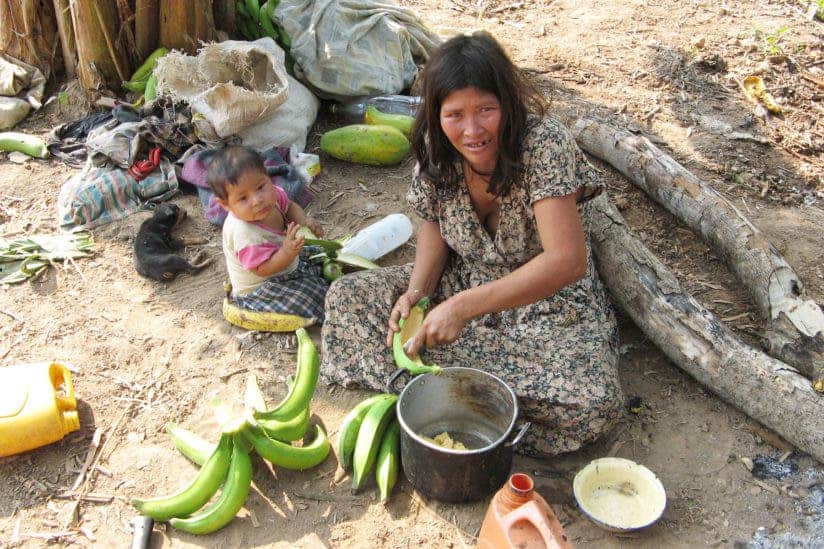Nearly 1 in 10 Americans over the age of 65 have dementia, and as the U.S. struggles with an aging population, the proportion of elderly people with Alzheimer’s and other neurodegenerative diseases is bound to increase. But in the Amazon basin, where some indigenous people still employ a subsistence lifestyle as they have for hundreds of years isolated from industrialized society, the rate of dementia hovers at around just 1%. These findings, reported by a new study from the University of South California, suggest that the Western lifestyle may be seriously putting people at risk of dementia in old age.
“Something about the pre-industrial subsistence lifestyle appears to protect older Tsimane and Moseten from dementia,” said Margaret Gatz, the lead study author and professor of psychology, gerontology and preventive medicine at the University of South California.

Gatz and colleagues traveled to the Bolivian Amazon jungle, where they closely studied the elderly of the Tsimane’ and Mosetén tribes — two indigenous peoples that have remained largely isolated from urban life elsewhere in the country.
The Tsimane’ number about 16,000 people living in mostly riverbank villages scattered across about 3,000 square miles of the Amazon jungle. They are forager-farmers who fish, hunt, and cut down trees with machetes, which keeps everyone very physically active throughout their lifetimes.
The neighboring Mosetén, which number around 3,000 and have close cultural ties with the Tsimane’, also reside in rural villages and rely on subsistence agricultural work. However, they live closer to towns, have schools, and access to health posts, as well as access to roads and electricity. Within the last decade, the Mosetén have also received cell phone service and running water.
Researchers employed computer tomography (CT) brain scans, cognitive and neurological tests, and questionnaires to assess the mental health among the Tsimane’ and Mosetén aged 60 and over.
According to the results, the study found just 5 cases of dementia among 435 Tsimane’ and one case among 169 Mosetén, which is much less than the rate of incidence in Western countries. Previously, studies of indigenous populations in Australia, North America, Guam, and Brazil found dementia prevalence ranging from 0.5% to 20%. The authors note that the apparent higher rate of dementia among older adults from indigenous tribes elsewhere in the world could be due to their higher contact with their industrialized neighbors, and subsequent adoption of more sedentary lifestyles.
In the same over-60 groups, the researchers also diagnosed about 8% of elderly Tsimane’ and 10% of Mosetén with mild cognitive impairment (MCI) — the stage between the expected cognitive decline of normal aging and the more serious decline of dementia. This condition is characterized by memory loss and a decline in cognitive abilities, such as language and spatial reasoning. The MCI rates were comparable to those encountered in high-income countries.
In high-income countries with high rates of dementia among older adults, the population generally does not engage in the recommended amount of physical activity and has a diet rich in sugars and fats. As a result, older adults are more susceptible to heart disease and brain aging. In contrast, the Tsimane’ people have unusually healthy hearts for their age. That’s not surprising considering they also have the lowest prevalence of coronary atherosclerosis of any population in the world.
Alzheimer’s has been previously associated with hypertension, diabetes, cardiovascular diseases, physical inactivity, and even air pollution. It’s no coincidence that these chronic diseases and health problems are staples of modern Western lifestyles.
In 2021, the same team from the University of South California found that the Tsimane indigenous people of the Bolivian Amazon experience less brain atrophy than their American and European peers. Their decrease in brain volume happened at a rate that was 70% lower than in Western populations.
“We’re in a race for solutions to the growing prevalence of Alzheimer’s disease and related dementias,” said Hillard Kaplan, a study co-author and professor of health economics and anthropology at Chapman University who has studied the Tsimane for two decades. “Looking at these diverse populations augments and accelerates our understanding of these diseases and generates new insights.”
If the Tsimane’ and Mosetén offer any indication, a pre-industrial lifestyle can offer significant protection against dementia. But that doesn’t mean we can all revert to foraging in the woods and living under the stars. In case someone is romanticizing life in the Amazon jungle, bear in mind that the Tsimane’ have an average of nine children per family who live an average of just over 50 years compared to the world average of 71.5 years. So while it may be true that indigenous Amazon people rarely suffer from dementia at old age, what’s certain is that even fewer actually make it that far.
The findings were published in Alzheimer’s & Dementia: The Journal of the Alzheimer’s Association.






